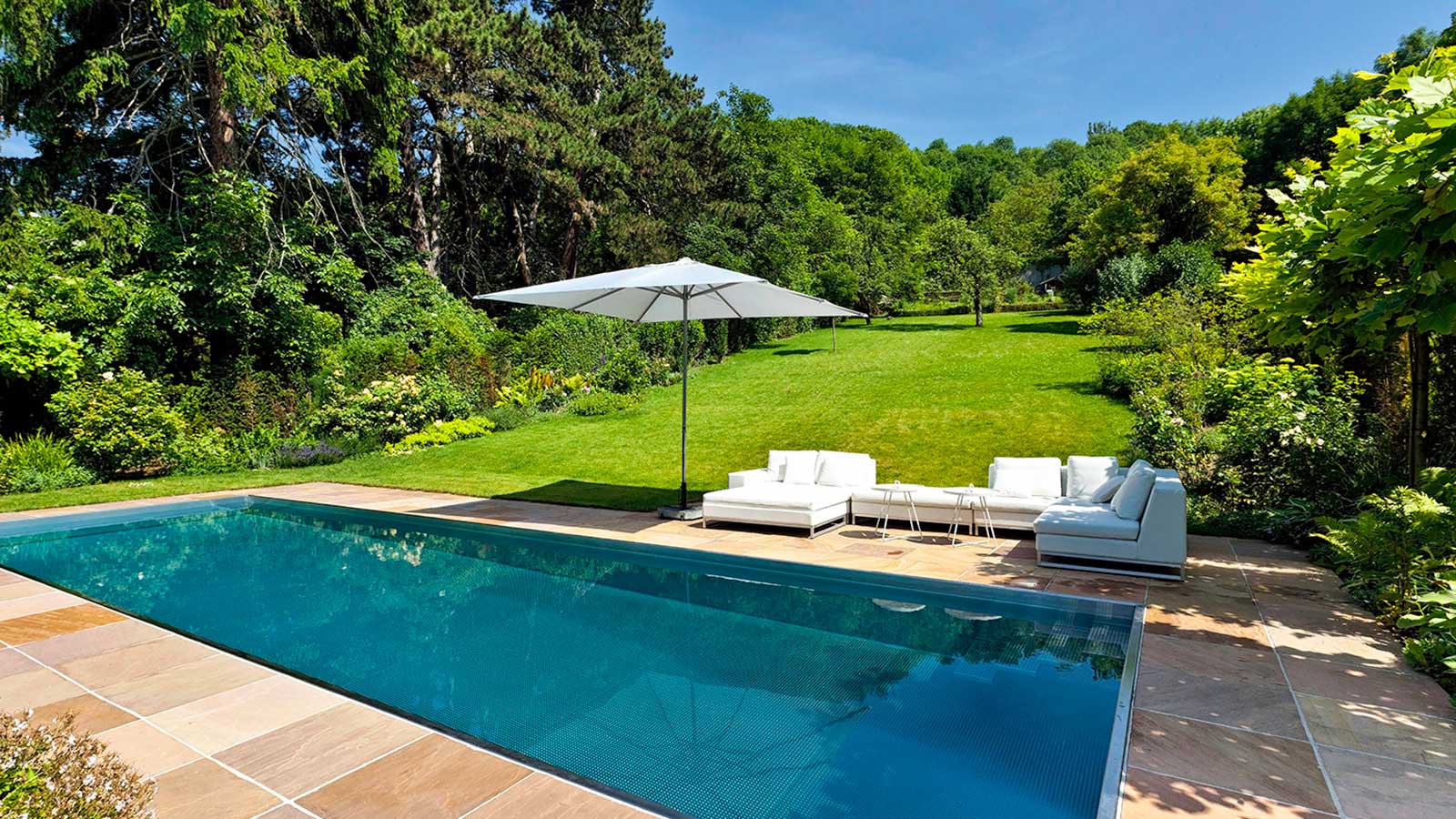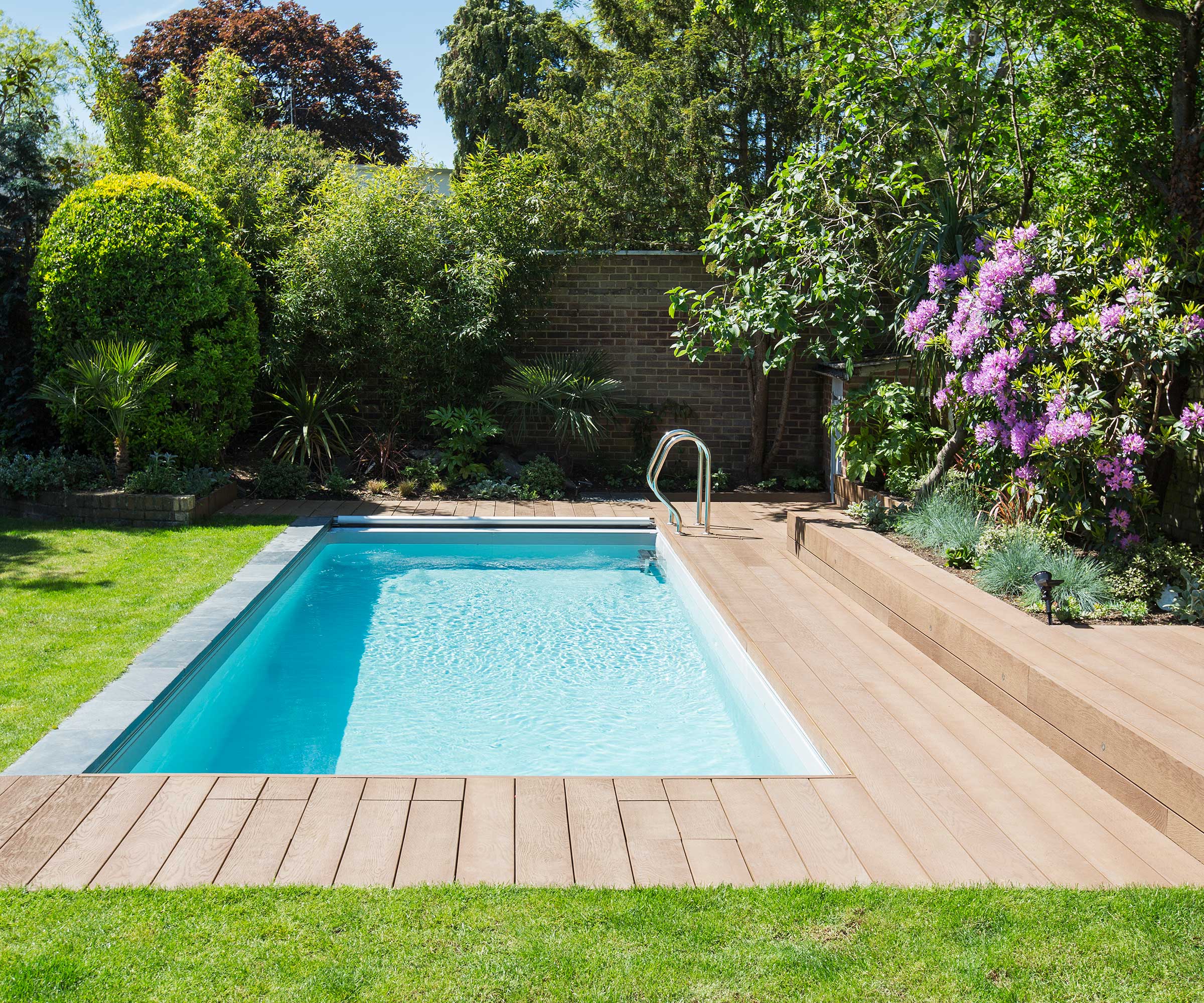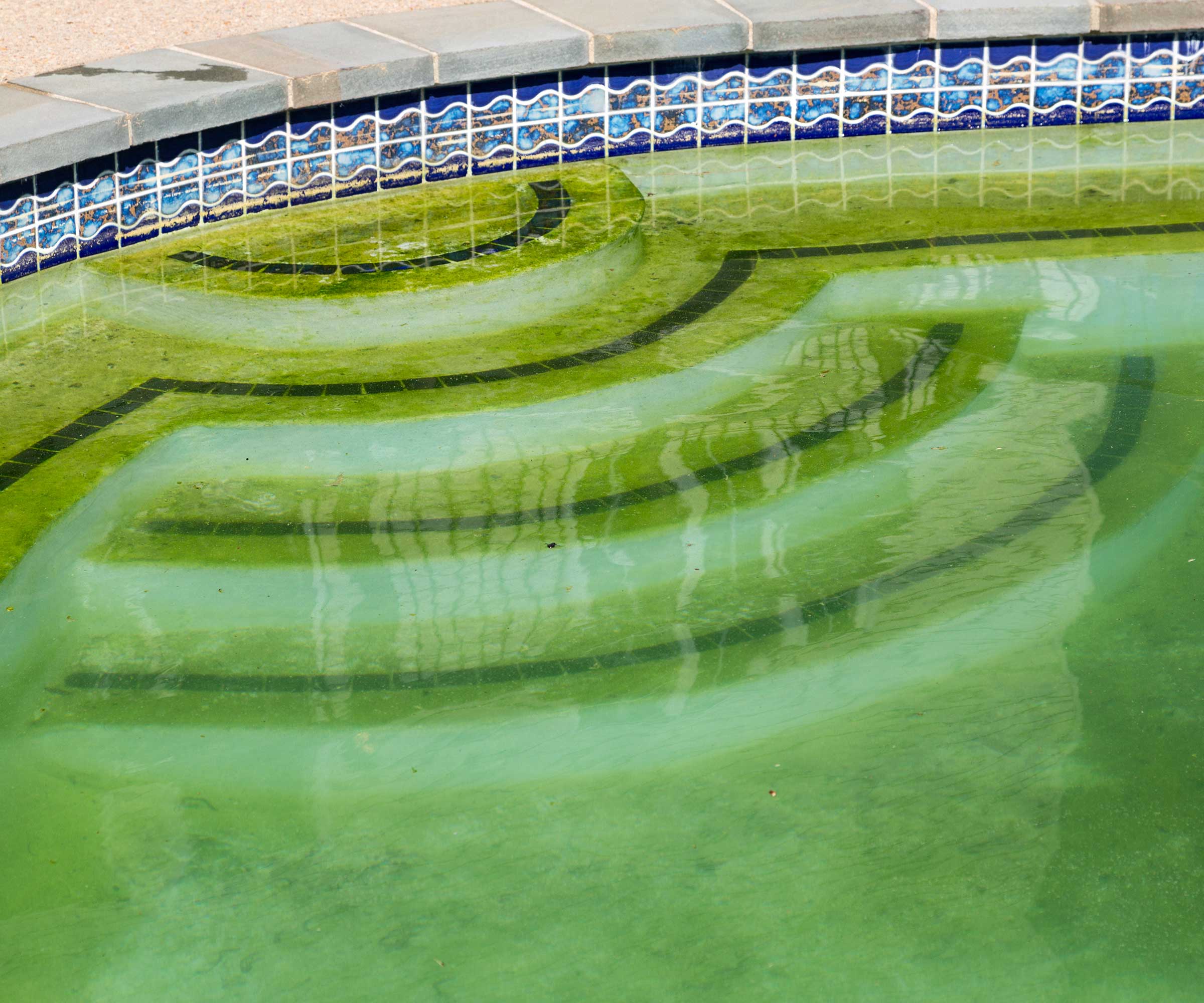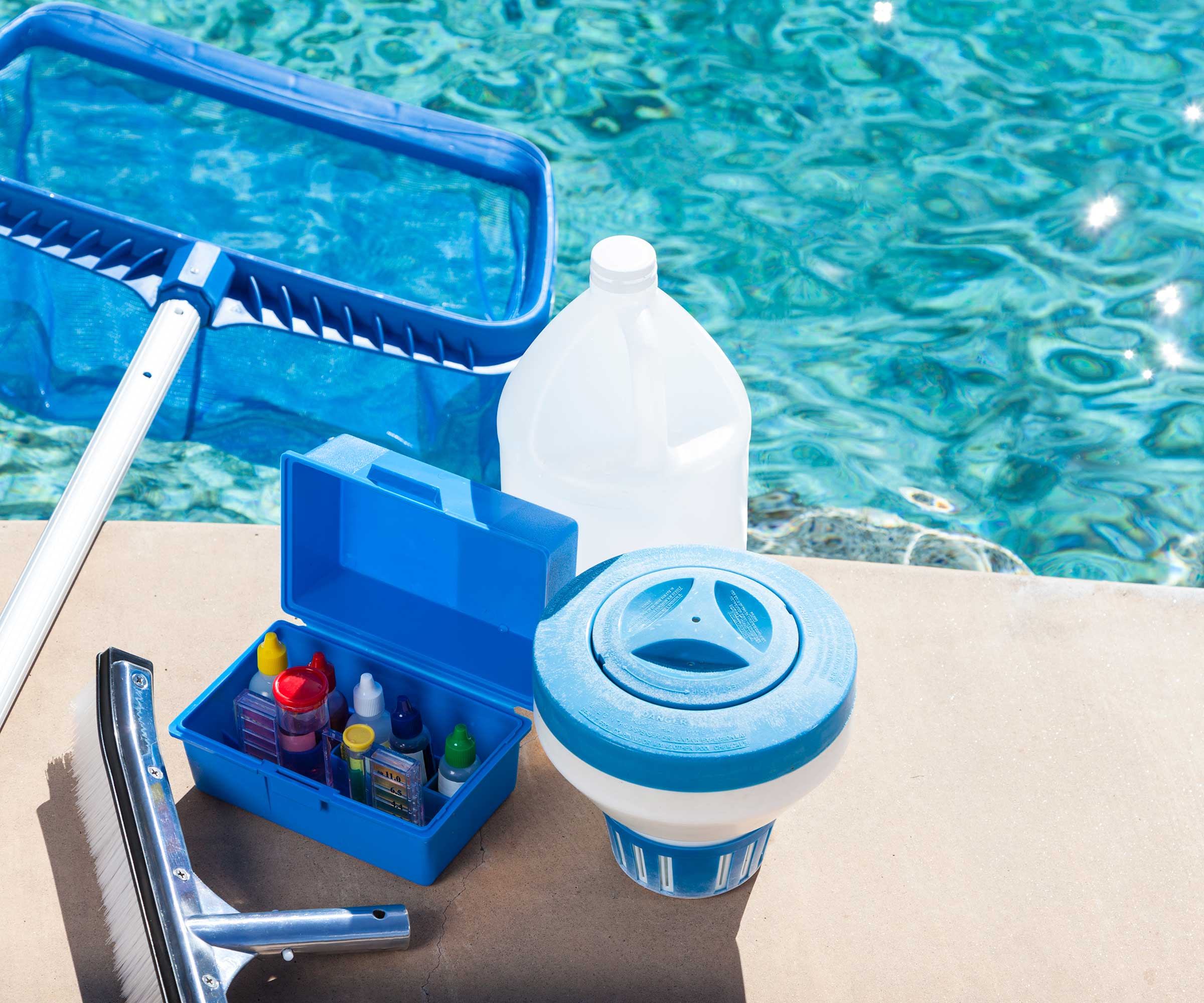Why is my pool turning green? – expert tips on tackling algae for a fresher and safer swim
Enjoy crystal clear water that's free of green goo with this insider info


Q: I have recently had a medium-sized pool installed in my backyard, and my family and I have used it a lot already to cool off from the summer heat. However, the water is starting to look a little green, with a build-up of algae forming on the steps and in the corners. Why has this happened, and how should I tackle it?
A: Green algae spoils the look of a backyard pool, not to mention, makes it less inviting to swim in. Plus, it can pose health risks: it encourages the growth of harmful bacteria which feed on it, it reduces visibility, and it can turn steps into a slip hazard. Over time, it can also stain the surfaces of your pool and even clog and damage the plumbing.
To put it simply, green algae in a pool needs addressing as soon as it's spotted, and that means reevaluating your pool maintenance routine. The good news is, with the right know-how, it's not too tricky to fix.

Keep your water sparkling clean
What causes green algae in a pool?
'There are a variety of reasons why a pool may turn green,' says Thomas Reesback of Kokido, a pool cleaning industry leader. These include not enough chlorine, too much cyanuric acid, a high pH level, a high phosphate level, and not enough filtration, he lists.
'The best way to prevent this from happening is regularly cleaning and maintaining your pool,' he advises. Using a pool brush and vacuum, adding pool shock, cleaning out the filters, and keeping the chemical levels balanced are all essential pool-care tasks. Regularly adding a pool algaecide – such as PoolTec's EasyCare Algaecide, available on Amazon – can also help to keep the water clear.
Proper maintenance is especially important after long rainstorms, as these can dilute chlorine levels, Thomas adds. It's also crucial following periods of heavier use – after a pool party, for instance.
'Green algae can also enter your pool through contaminated swimsuits or toys that were worn or used in natural waters like oceans or lakes,' says Mallory Micetich, a Home Expert of Angi. To combat this, she recommends disinfecting them with bleach before returning them to your pool.
Design expertise in your inbox – from inspiring decorating ideas and beautiful celebrity homes to practical gardening advice and shopping round-ups.

Mallory Micetich is a Home Care Expert, with particular expertise in small home living and consumer protection. Currently renting in Austin, TX, she has been a homeowner, investor, and landlord over the last decade. She is committed to minimizing her environmental footprint and to small home living, having lived in only properties of 1,000 square feet or less.

Green algae can spread quickly
How to get rid of green algae in your pool in 5 simple steps
'Algae plants grow fast, so it’s important to act as quickly as possible,' says Mallory. She shares her step-by-step guide below:
- 'Start by scrubbing your entire pool with a pool brush,' says Mallory. 'This should make the algae sink to the bottom of the pool.' This Fly Hawk pool brush from Amazon is perfect for the job, with four lengths available.
- Once you’re done scrubbing, use a pool vacuum to get rid of all of the algae from the bottom of the pool.
- 'Now that you have removed all of the algae, it’s time to test your water and make sure everything falls within the recommended levels,' she continues. The EasyTest 7-Way Pool Test Strips, available on Amazon, are a popular product for this task. According to Thomas, the pH level should be anywhere between 7.2-7.6.
- 'Then, double-shock your pool using two pounds of shock for every 10,000 gallons of water. This step is important because it kills any leftover algae that could grow back after manually removing it,' Mallory says. The treatment will be more effective if you've balanced the chemical levels properly beforehand.
- Next, Mallory advises running your filter until the water clears up, before testing your water again. Then, disinfect your pool filter. 'Every filter is different, so I recommend researching how to properly disinfect or replace your filter.'

A proper pool maintenance routine will help prevent algae from forming
Other types of algae that grow in swimming pools
Green algae isn't the only type of algae to look out for in your pool. Mustard algae and black algae can also develop.
Mustard algae, as its name suggests, is more yellow in color. It's trickier to eradicate than green algae due to its higher resistance to chlorine. Meanwhile, black algae appears as small spots and can deeply penetrate the surfaces of your pool over time. Again, it can be difficult to get rid of, so the sooner you take action, the better.
Once you've got your pool water back to its former glory, you'll want to keep it that way. So, keep up your cleaning routine and be sure to check the chemical levels regularly.
You could also invest in a cover for when the pool is not in use, suggests Muffetta Krueger, cleaning expert and Founder of Muffetta's Domestic Assistants. This minimizes sunlight exposure, which can aid algae growth – and prevents debris, such as pollen, from falling in your pool, too.
Creating shade for your pool can also help, while keeping you cool as you swim.

Holly started writing about gardening five years ago, and she is a regular contributor to Homes & Gardens. She has also written many gardening features for Woman & Home and Real Homes, too. She has previous experience as a professional gardener, where she helped to plant and maintain private gardens. Holly has also looked after allotment plots over the years and loves to grow her own flowers and veggies from seed. In her spare time, she enjoys visiting local gardens, botanical drawing, and tending to her ever-growing collection of houseplants.